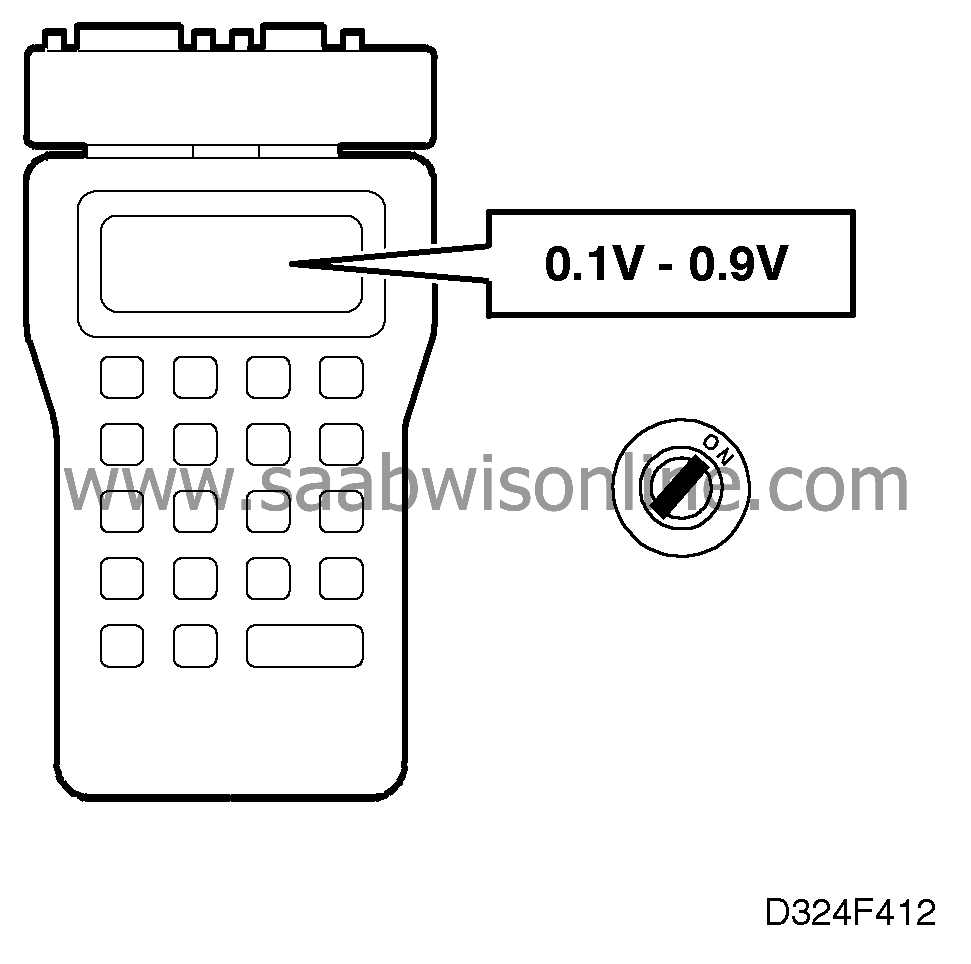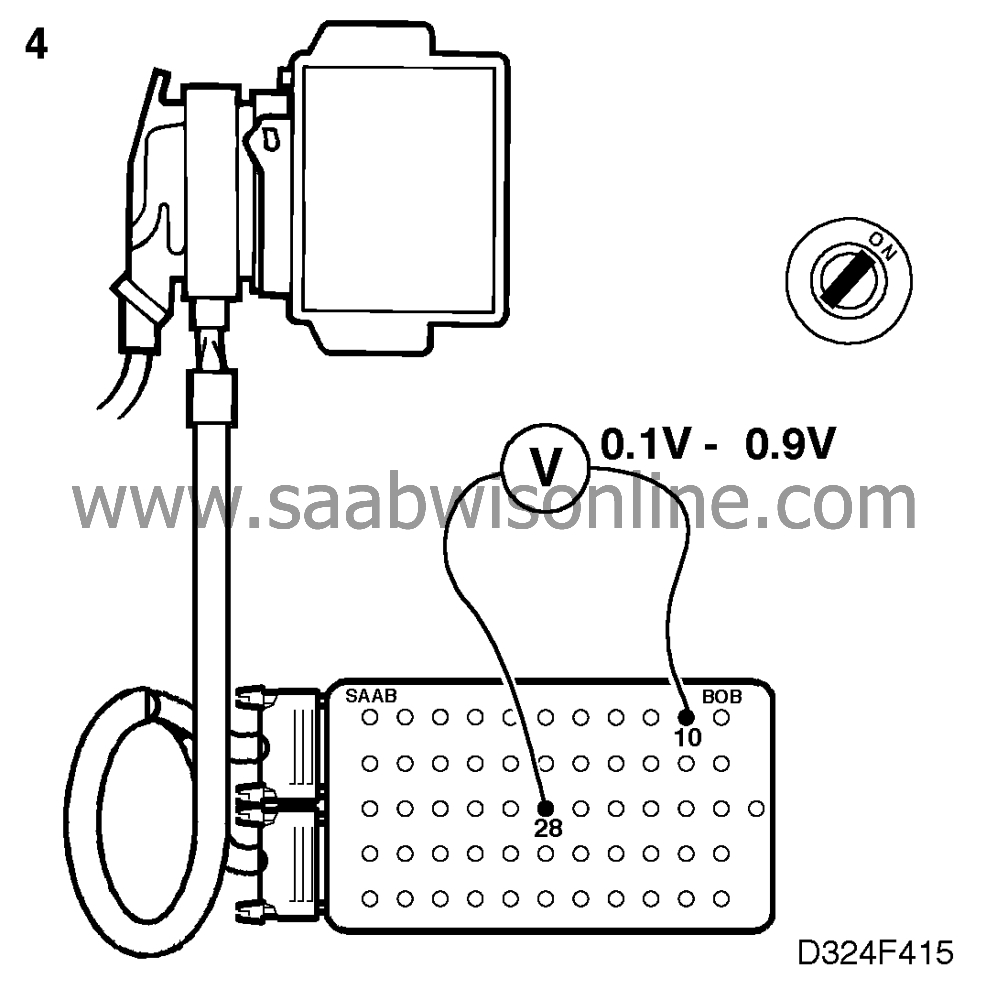P0131,P0132,P0134
Symptom: CHECK ENGINE lamp (MIL) on
| P0131 , P0132, P0134 |
Oxygen sensor 1 for cyl. 1-3-5 (rear), input to control module low/high, absent, no continuity or shorting to ground/batt+

Fault symptom
CHECK ENGINE lamp (MIL) onCondition
lower than 0.09 V, higher than 1.1 V or constant between 0.35 and 0.55 V.If, for a period of at least 2.5 seconds, the voltage at temperatures above 70°C (158°F) is
| Note | ||
|
In the event of a break in the circuit, the control module will assume a value corresponding to a sensor voltage of 0.45 V. |
| Diagnostic procedure |
| 1. |
Connect the ISAT, start the
engine and run it at idling speed until
it reaches normal operating temperature.
Use the ISAT command "OXY SENSOR 1-3-5" in the "READ FUNCTIONS" menu to check the voltage of the oxygen sensor, which should vary between 0.1 and 0.9 V. Vary engine rpm to obtain faster voltage variations. If there is no voltage or if it does not vary with changing engine rpm, the fault probably lies with the oxygen sensor or a break in the signal lead between the sensor and the control module. |
|
| 5. |
If no fault can be detected after carrying out the above checking
procedure, clear the trouble code and drive the car on the road to
check whether the trouble code is generated afresh. If it is, turn to
 for further diagnostic instructions.
for further diagnostic instructions.
|
|






